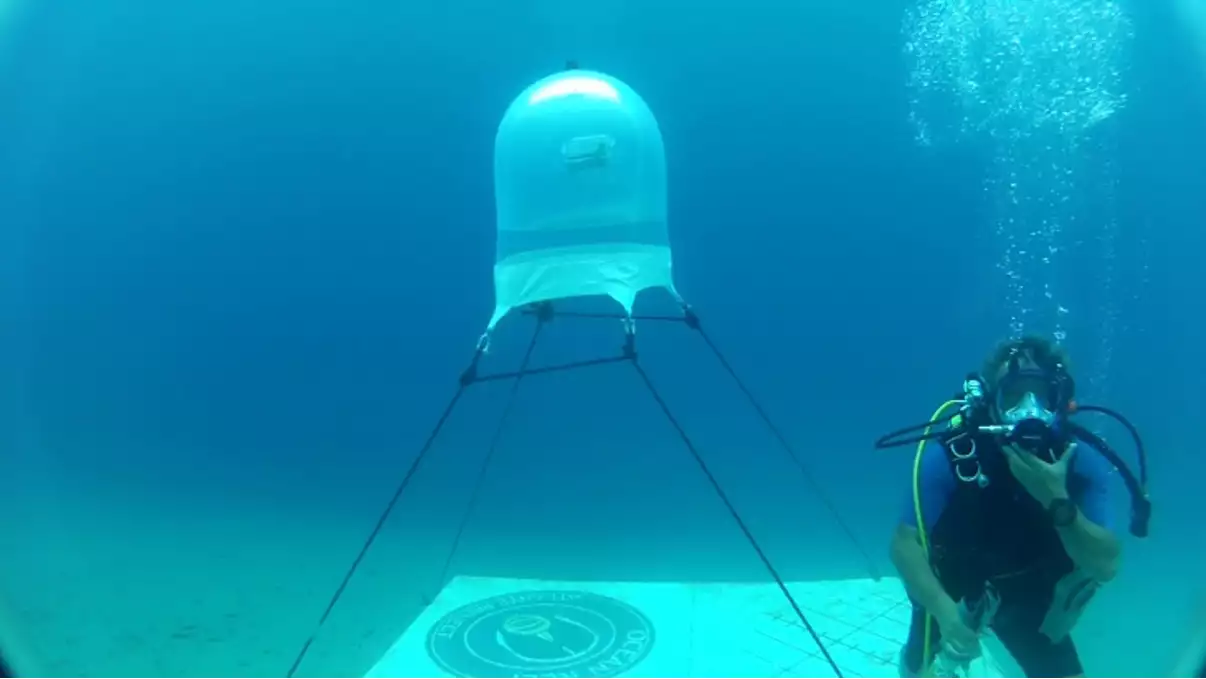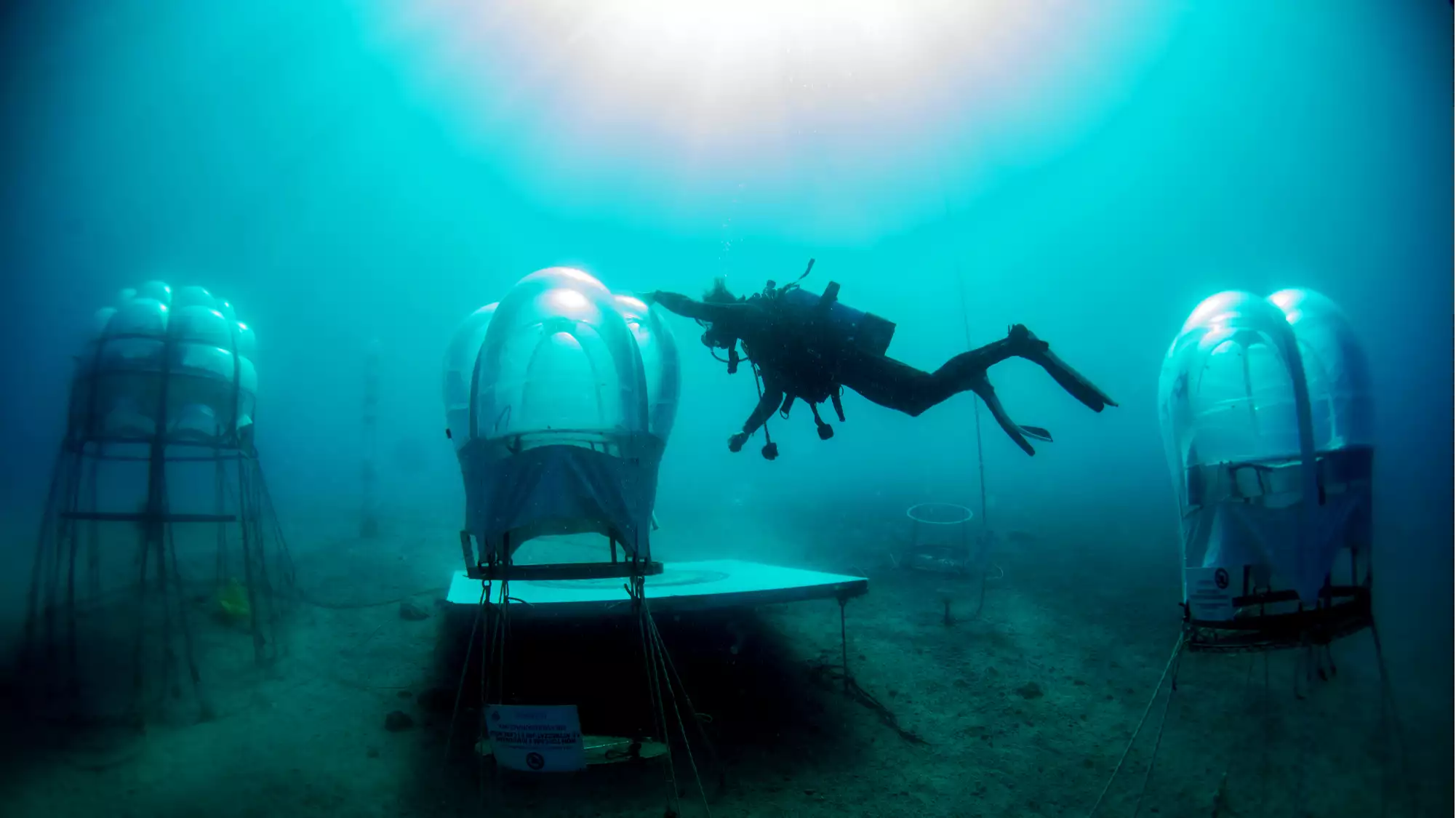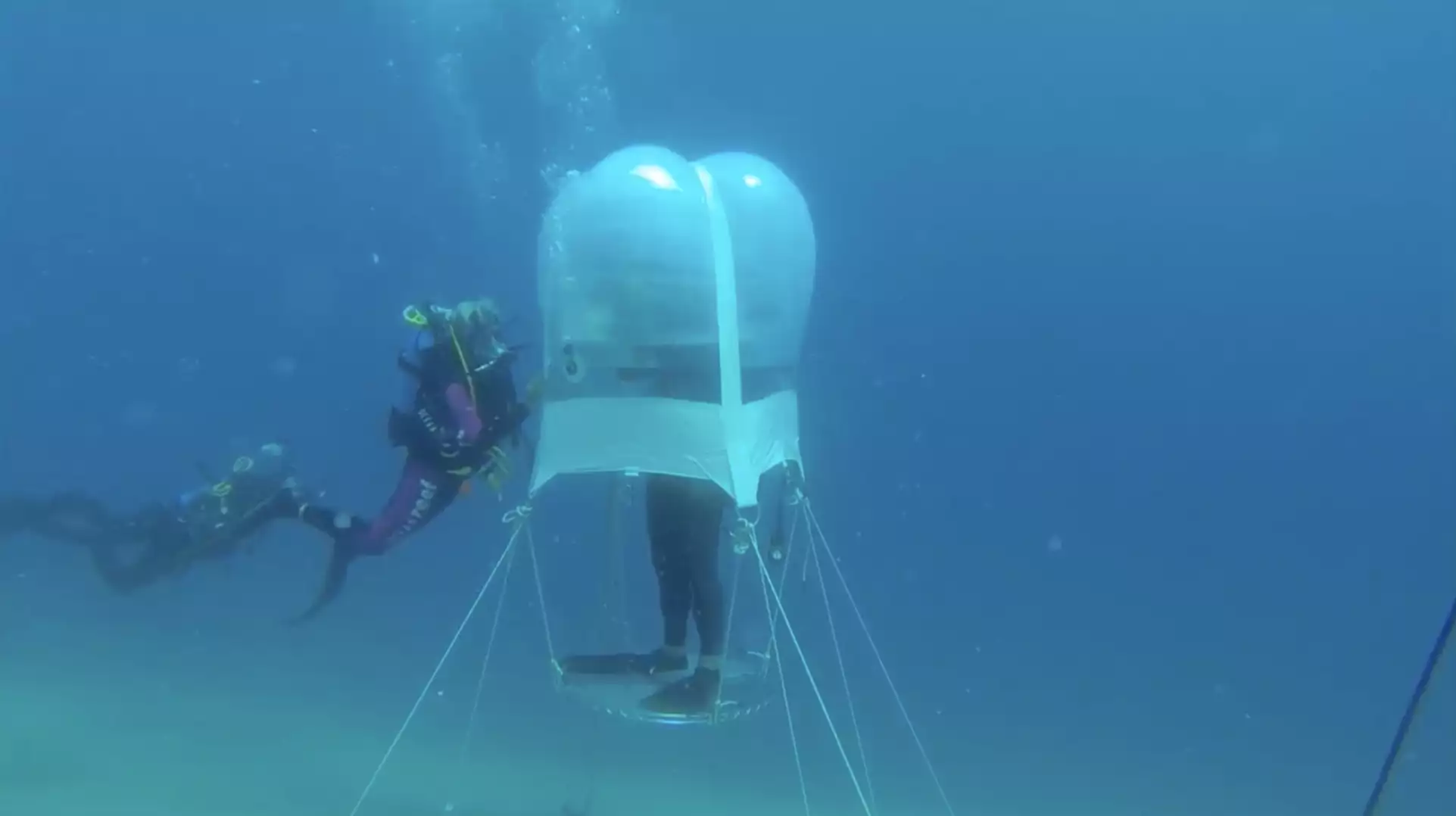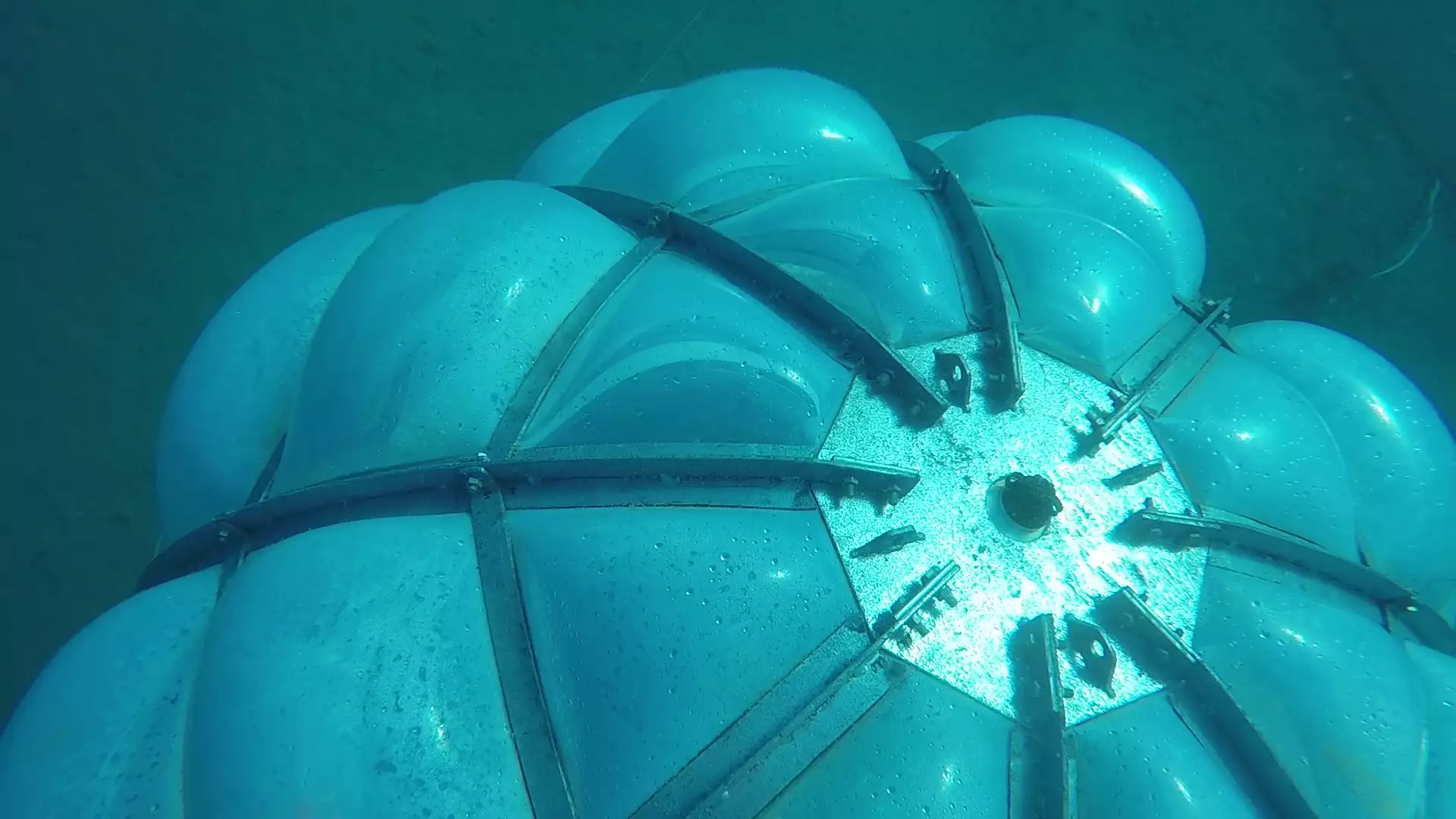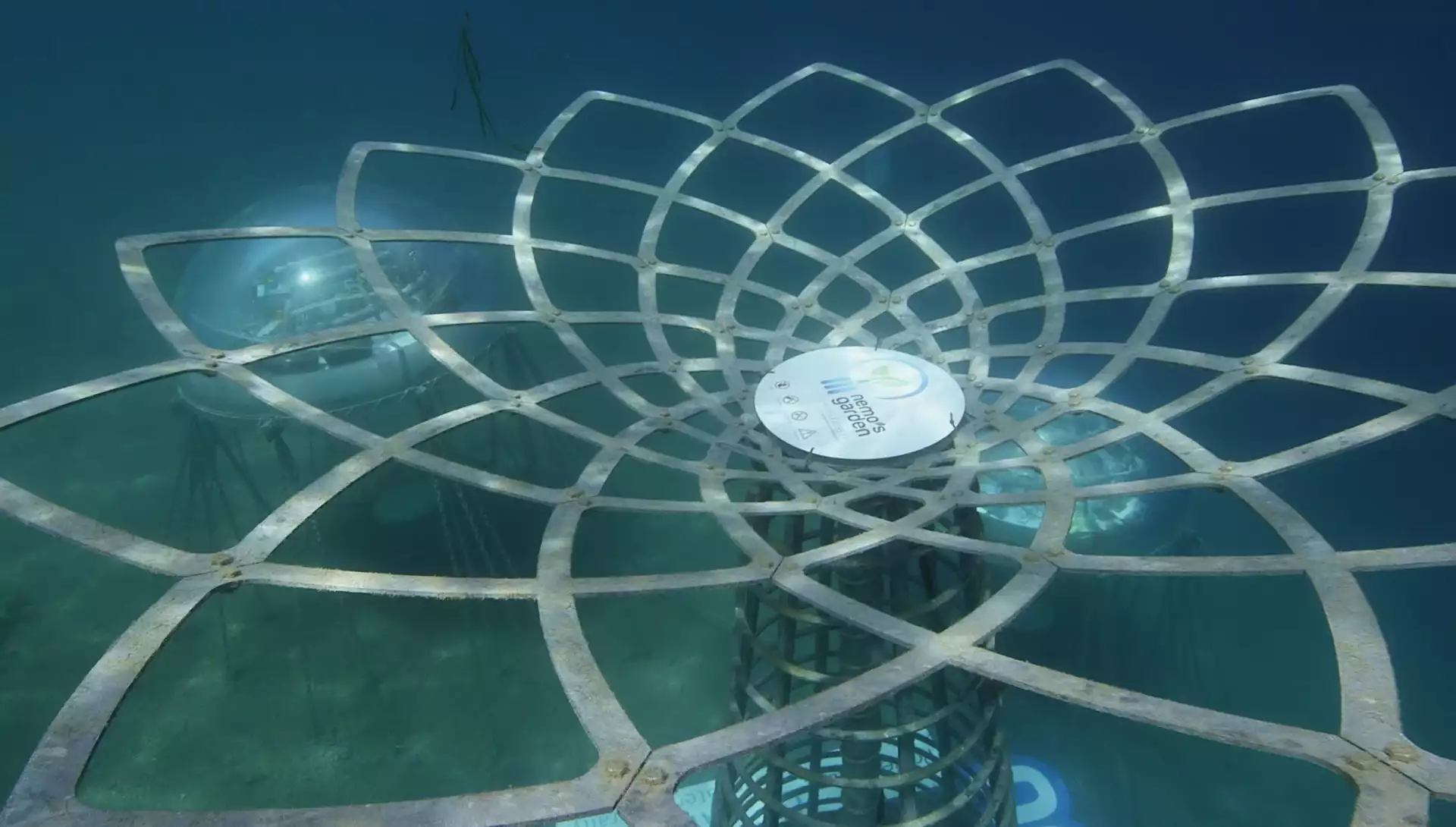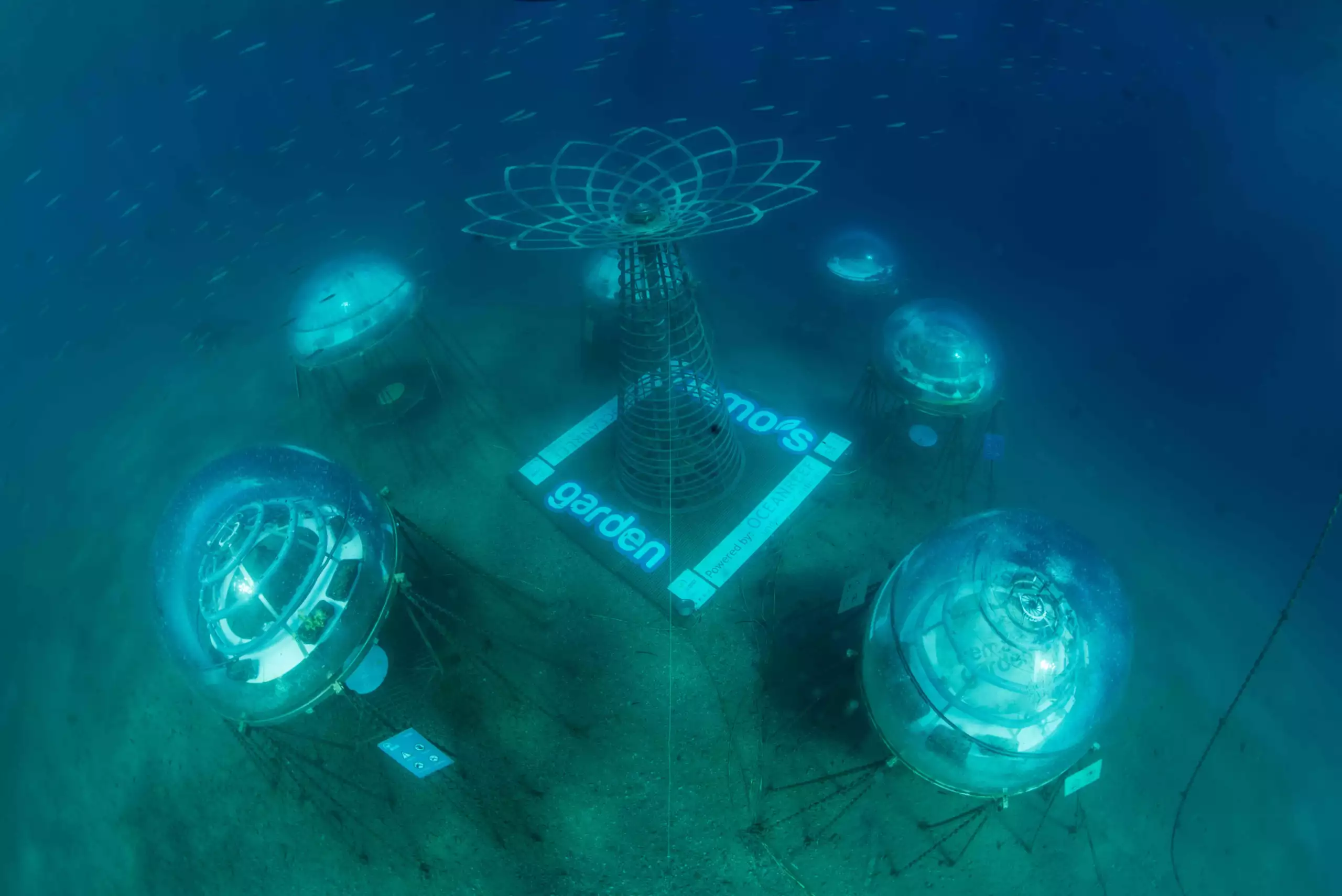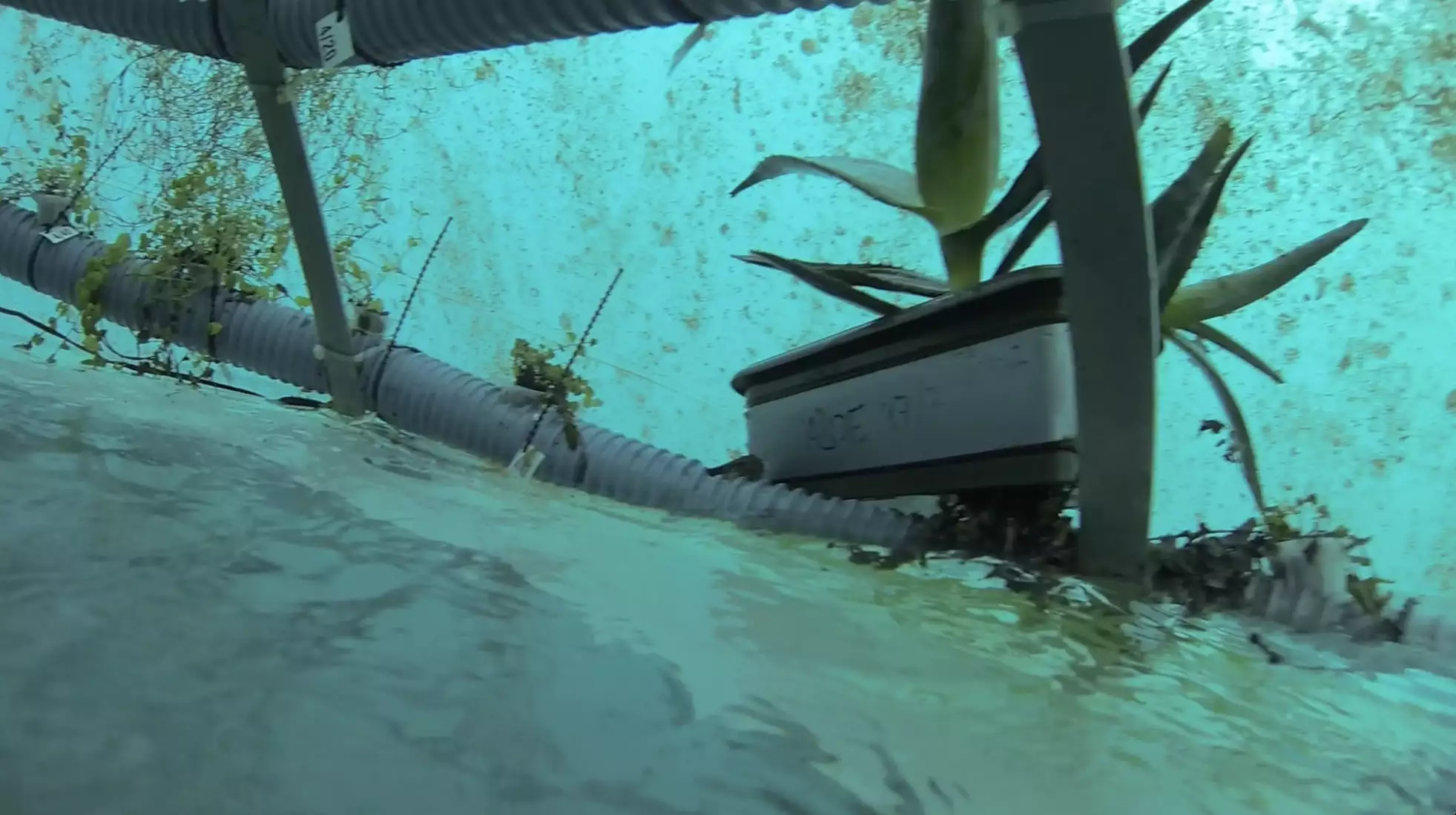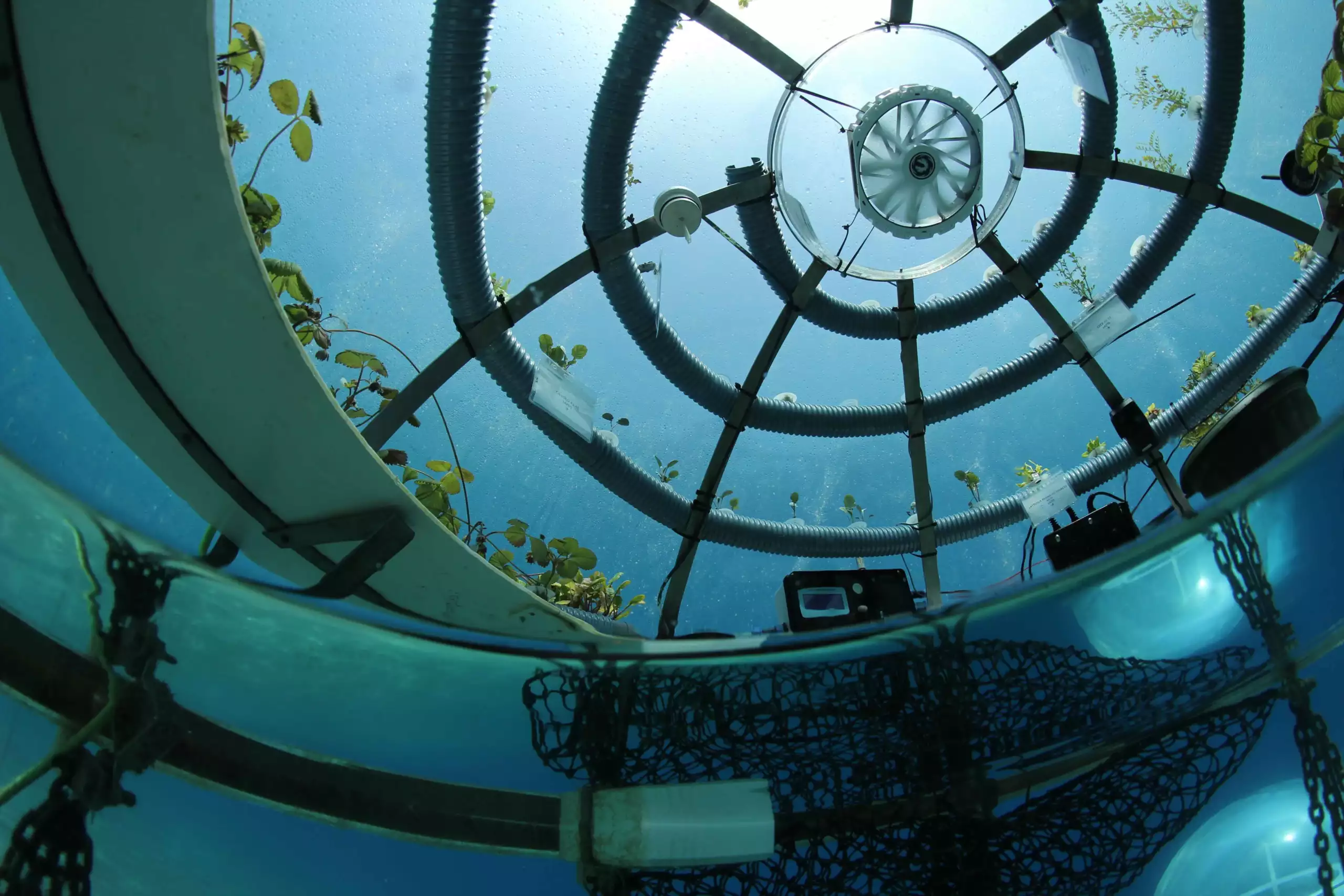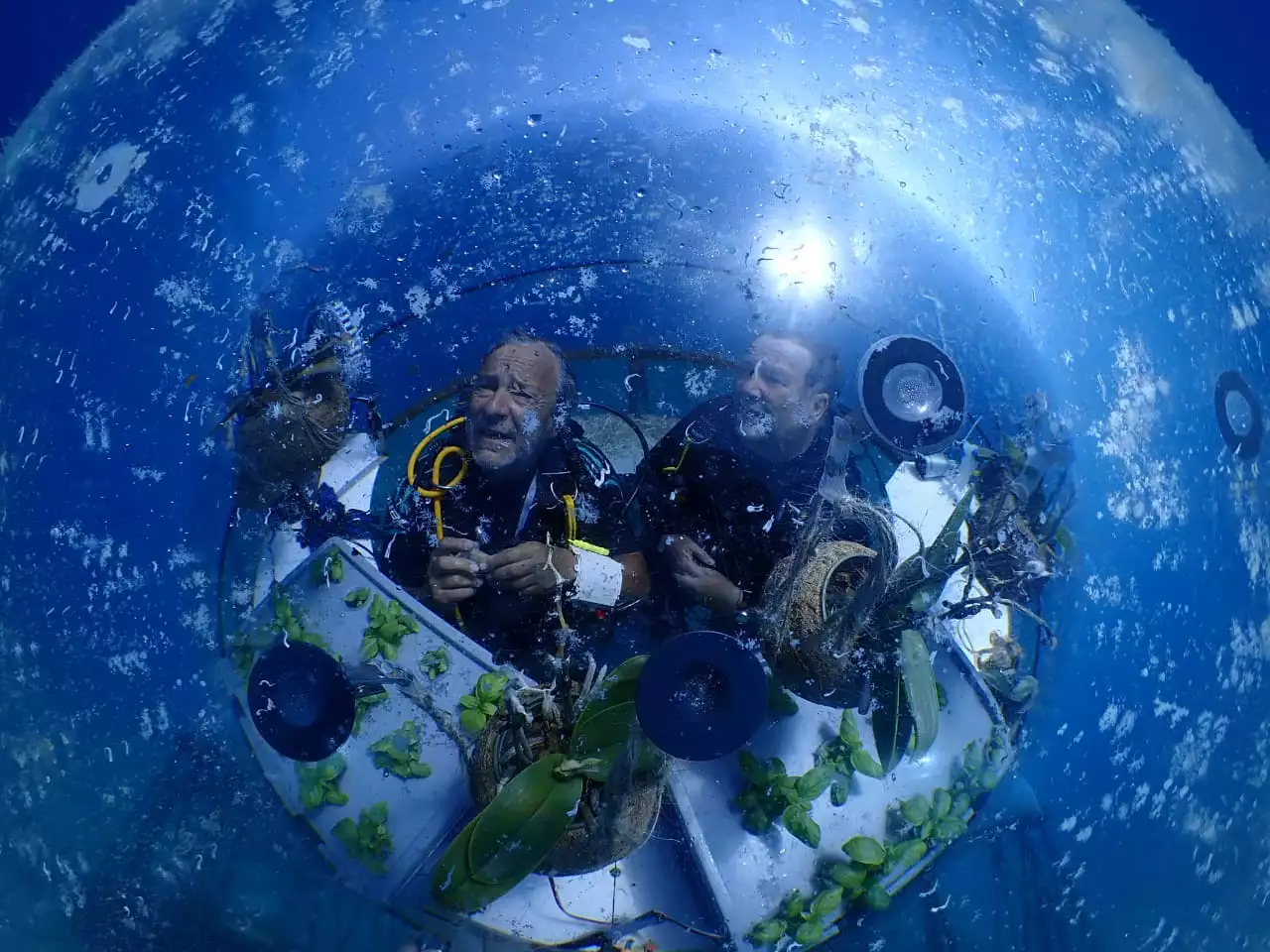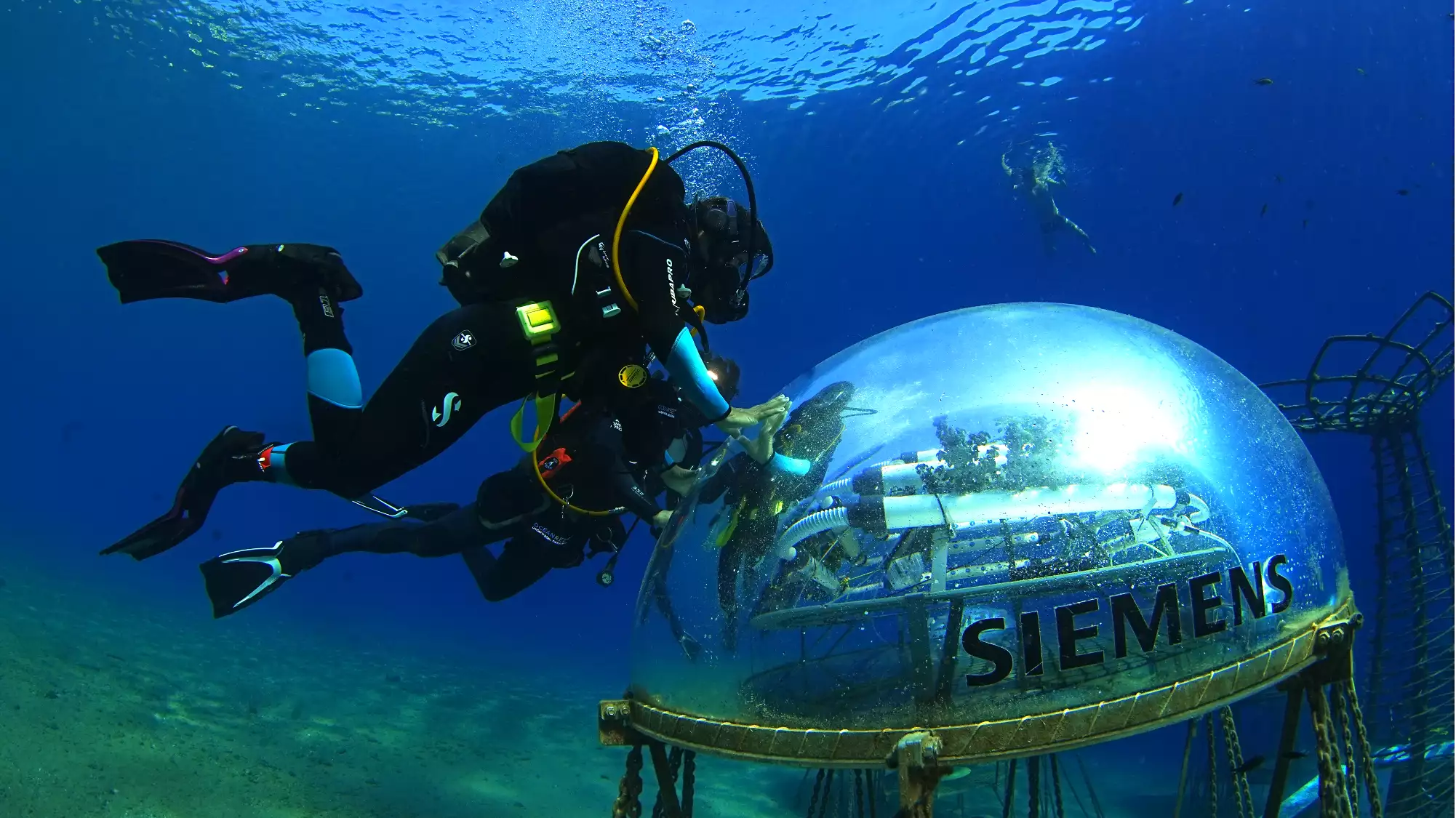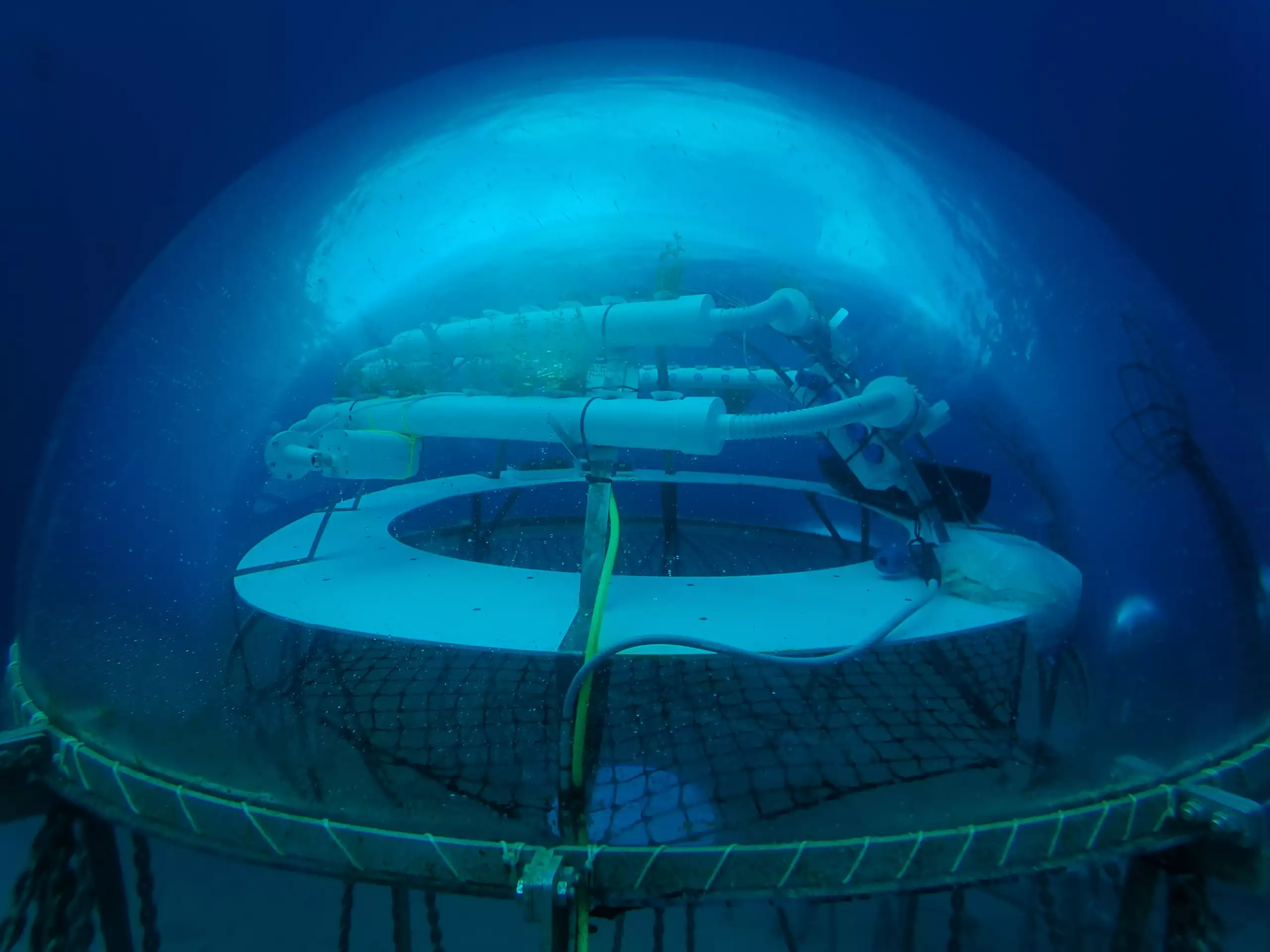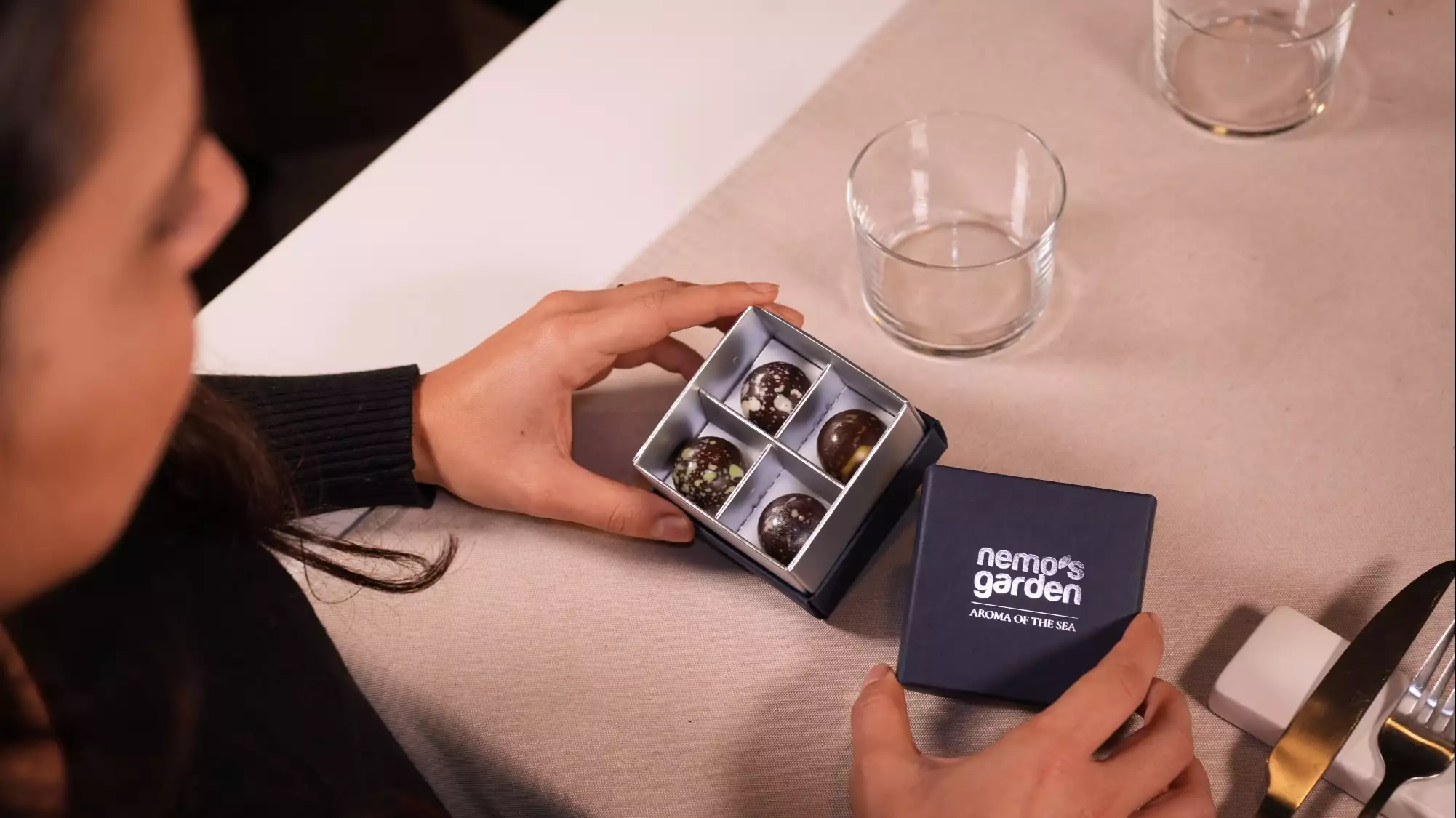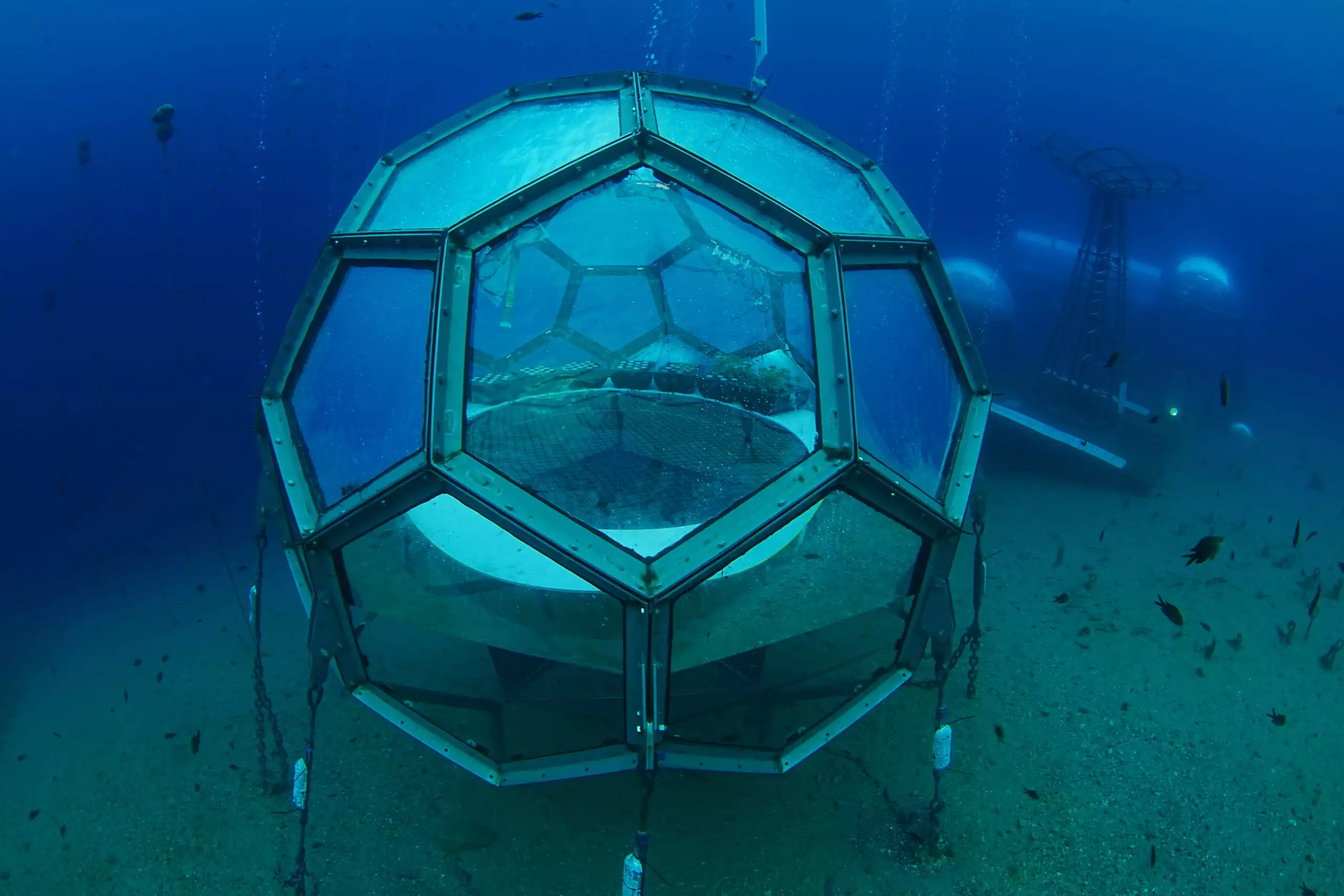The project
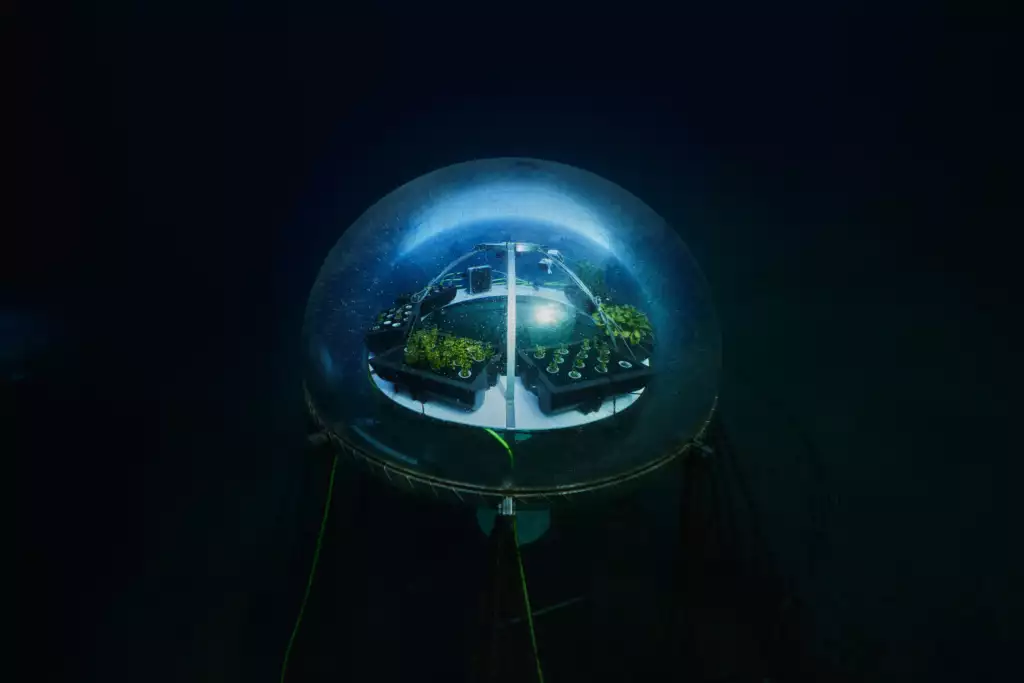
The idea
In the summer of 2012, Sergio Gamberini, founder of the diving equipment company Ocean Reef Group, was enjoying a seaside vacation on the Italian Riviera. Between dives, he liked to stroll along the shoreline, chatting with friends.
One day, the conversation turned to another of his passions: gardening.
Would it be possible, he wondered, to create the ideal growing conditions for basil—the region’s most popular herb and a key ingredient in pesto?
Like most herbs, basil thrives in protected, sunny locations with well-drained soil and a stable temperature.
As he gazed at the sea, Gamberini was struck by an unusual idea: why not try growing basil underwater?
Bizarre as it might have seemed, the concept made perfect sense for a diving enthusiast and innovation-driven entrepreneur. In fact, it offered him the opportunity to combine two of his greatest passions: scuba diving and gardening.
Curious to test his theory, with the help of his team at Ocean Reef Group, he began experimenting—submerging transparent biospheres 20 feet below the surface and filling them with air.
The project goal
Deliver next-generation sustainable Agri-Tech for regions facing climate stress, resource scarcity, or the need for innovative solutions.
At Nemo’s Garden, we practice natural engineering —an approach that works with nature, not to deplete it. Instead of forcing environments to fit our needs, we adapt to existing conditions and enhance their natural potential. It’s about harnessing what’s already there —light, pressure, temperature, humidity — and turning challenges into advantages, sustainably. The foremost important condition being the oceans and other bodies of water.
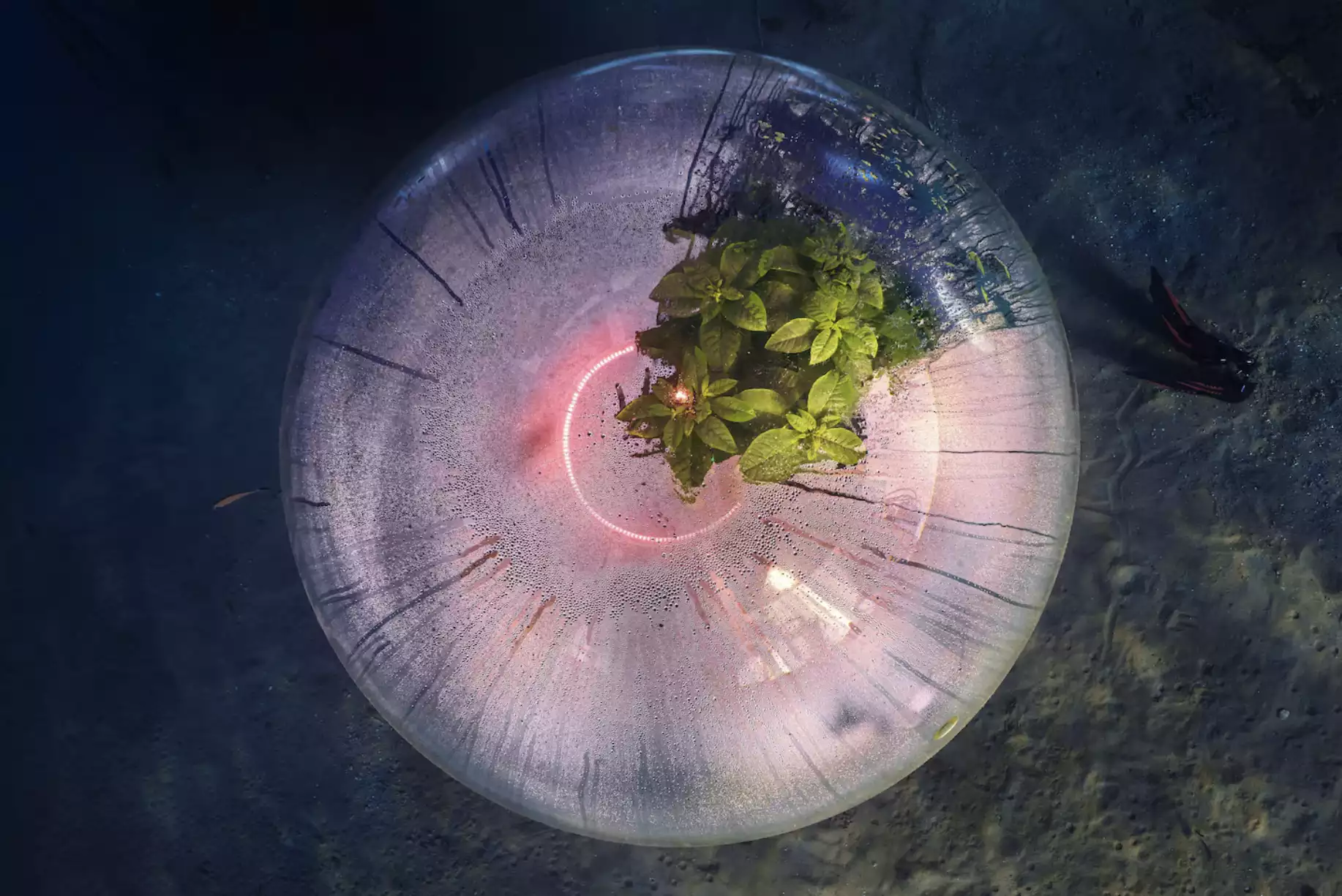
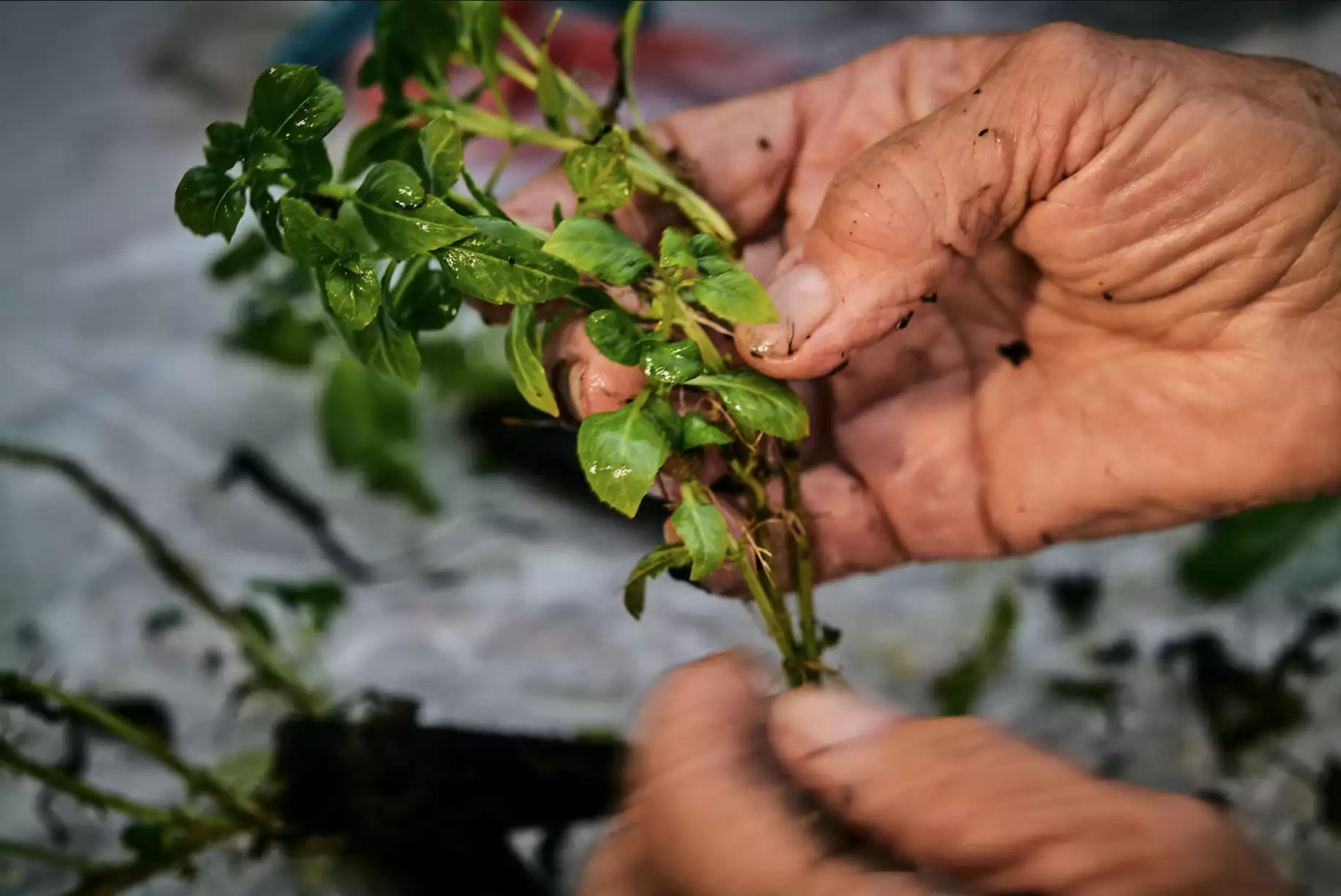
Project Insights
Nemo’s Garden keywords:
Self-Sustaining by Design
Nemo’s Garden is more than a technological innovation—it’s a self-sustaining ecosystem rooted in ecological balance and long-term viability. Designed to function in harmony with its environment, the system relies entirely on renewable energy and natural processes.
Renewable energy powers operations, while seawater is naturally desalinated to provide fresh water for irrigation. Inside the biospheres, a highly stable microclimate and optimal thermal conditions created by the surrounding sea, support healthy plant growth—replicating the benefits of a traditional greenhouse without external energy inputs.
This method proves that agriculture can be efficient and sustainable, even in the most unexpected environments.
Eco-Conscious by Nature
Nemo’s Garden is designed to exist in symbiosis with the marine environment. Unlike conventional farming or industrial systems that often disrupt natural ecosystems, our underwater biospheres have a minimal ecological footprint—and in many cases, a regenerative impact.
The structures act as artificial reefs, creating sheltered habitats that encourage the return of marine life and biodiversity. By providing calm, protected spaces in areas, Nemo’s Garden contributes to the restoration of underwater ecosystems rather than their degradation.
This holistic approach reflects our core philosophy as well as working towards circularity.
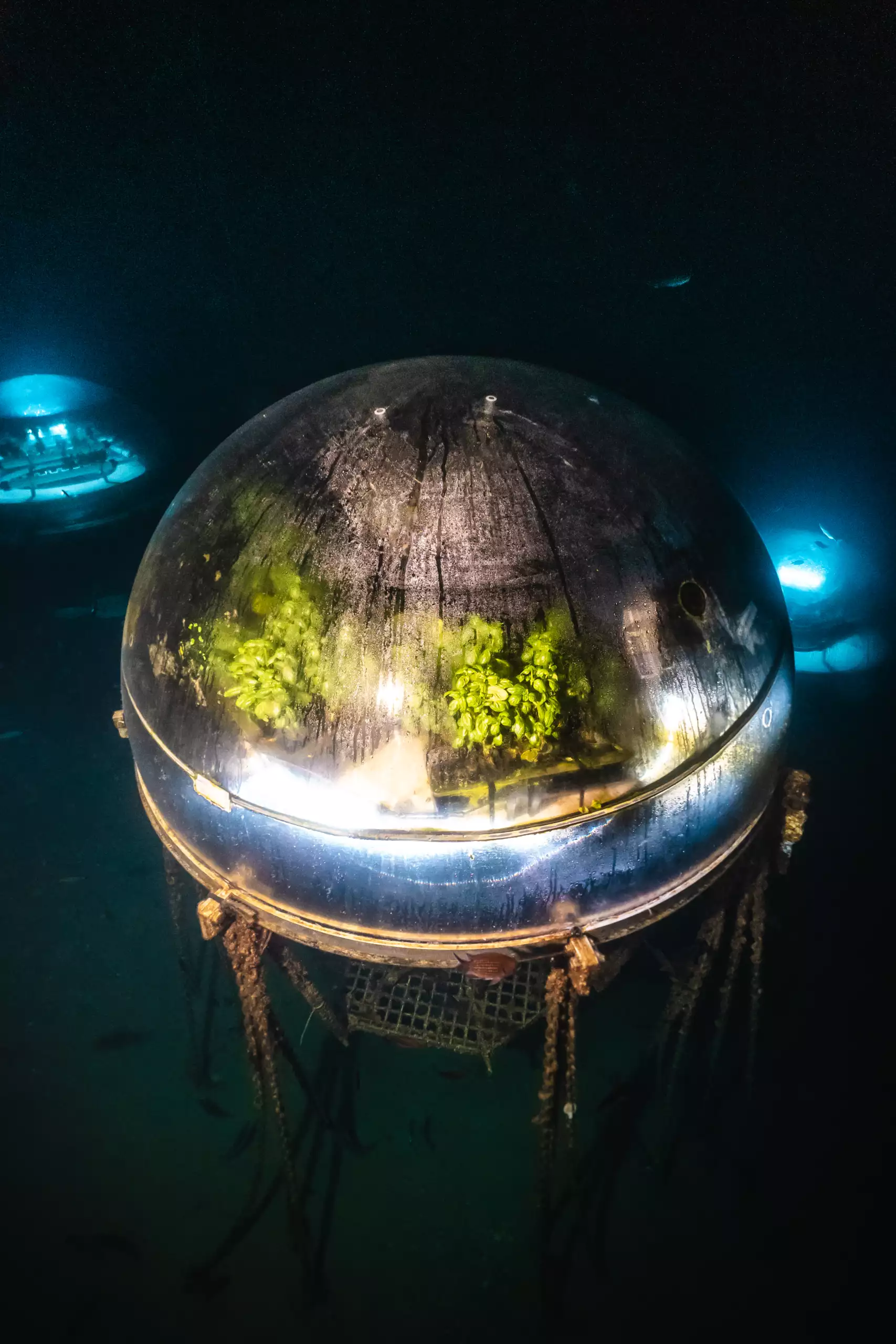
Positioned below sea level, the plants benefit from greater thermal stability, avoiding the temperature fluctuations that occur at the surface between day and night and seasonal swings.
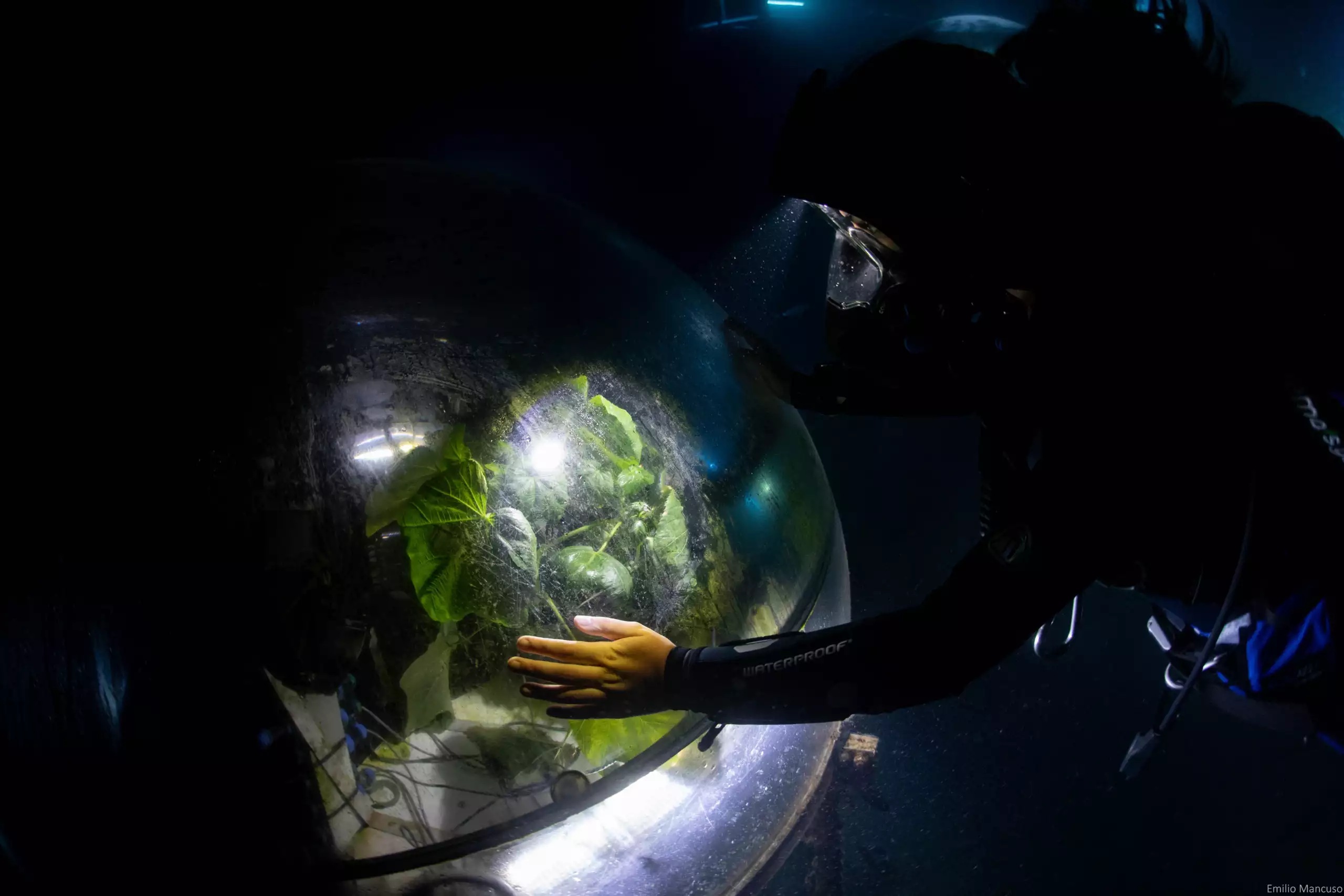
First attempt
The first attempt was conducted in the summer of 2012. We planted green basil in a little biosphere, still too small for agrinauts to access, anchored to the bottom of the sea.
The history of Nemo’s Garden started in 2012 in the Bay of Noli, on the Italian Riviera, when Sergio Gamberini, founder of Ocean Reef Group, came up with a funky idea, trying to combine two of his passions, scuba diving and gardening: “The goal is to create underwater plant cultivations to generate original species with the designation ‘vegetable produced underwater,’ aimed at commercial exploitation both for the uniqueness of the growth environment and for the characteristic of developing in a closed and stable setting, similar to a biosphere”.
The project starts to take shape
In the summer of 2013, the underwater farm was expanded with two 800-liter polythene biospheres big enough for agrinauts to get inside, so that they could follow the basil’s growth till harvest.
Analysis conducted by private research institute CeRSAA on our underwater basil showed that it had the same taste of the land-grown one, but the leaves contained more essential oils than the standard crop: 72.94% vs 57.13%.
Expanding the scope of the research
In the summer of 2014, we decided to design and install a bigger 2,000-liter biosphere and we started growing a different kind of crop: salad.
This expansion helped us get a better understanding of the engineering aspects of our project.
At the end of the farming season, we tasted a delicious Nemo Pesto sauce made with our own basil and a big, leafy bowl of salad! Certainly, the first scuba salad ever.
The world discovers Nemo’s Garden
In 2015 we increased the number of biospheres in a variety of shapes, sizes and materials and more than thirty new crops. Sharp surge in media exposure driven by our participation in the Milan EXPO2015.
By this time, Nemo’s Garden was composed of: four 800-liter biospheres, one 2,000-liter biosphere, two 50-liter biospheres and a 2,000-liter rigid biosphere. During the summer, we planted green basil, red basil, different types of salads (rocket, lettuce, rouge, green bowl), tomatoes, zucchini, beans, green peas, herbs (mint, oregano, sage, thyme, cilantro), flowers, aloe vera, mushrooms, and many other crops. Chemical analysis showed a high concentration of essential oils due to the pressurized environment, fastest growing conditions (provided humidity and air temperature are kept under control) and no negative effects from the sea-filtered sunlight radiation.
Stepping up the challenge
By the summer of 2016, a groundbreaking underwater habitat had taken shape—comprising five rigid biospheres, each two meters in diameter.
At the heart of our submerged landscape stood the Tree of Life—symbolizing a sustainable future. This season, we validated past data, refined underwater hydroponics, and explored plant uses in cosmetics and pharma. With Balich International, we created an underwater replica of the iconic design and, for the first time, operated successfully through winter despite extreme conditions.
Continuous growth
Nemo’s Garden took a significant leap forward by adopting hydroponics as the primary cultivation method within the biospheres. This system—soil-free and highly efficient—enabled us to increase crop yield while optimizing space and resource use underwater.
At the same time, we continued experimenting with the biospheres’ unique ability to naturally desalinate seawater. The temperature difference between the internal air and surrounding seawater causes condensation to form on the inner surface of the dome. This distilled water, though free of nutrients, was successfully collected and enriched with fertilizer for irrigation—further proving the system’s potential for self-sufficiency.
Never give up
In 2018, Nemo’s Garden faced its most extreme challenge yet: one of the first recorded Mediterranean hurricanes—or medicanes—struck the Ligurian coast with unprecedented force.
A powerful storm dealt the worst structural damage in our history—yet the biospheres remained partially intact, proving their resilience. Rather than a setback, the event became a testing ground, driving smarter, stronger design. It highlighted the urgent reality of climate change and reinforced our mission: to create systems that endure and adapt. Despite the disruption, we achieved technical progress, including a major increase in successful seedbeds—clear proof that innovation continued, even in adversity.
A new beginning
2019 marked a year of rebuilding, renewal, and reaffirmed vision. In the aftermath of the storm, we didn’t just restore Nemo’s Garden—we evolved it. Our further focus was on energy autonomy.
Resilience became infrastructure, and sustainability became system. With the structural integrity of the biospheres reinforced, we moved forward with the installation of renewable energy systems—introducing both small solar panels and compact wind turbine. These upgrades allowed Nemo’s Garden to take a major step toward full energy self-sufficiency, validating our model of low-impact, off-grid agriculture. What began as a response to damage became a catalyst for deeper transformation—proving that resilience isn’t just about surviving challenges, but building smarter because of them.
Pandemic
In 2020, due to Covid19, Nemo’s was forced to a hard stop. The habitat was left to fend for itself, unguarded. But we had the proof that life is stronger than anything – the habitat survived, basically undamaged.
During the end of 2020, while Italy’s totalCOVID lockdown was making things hard for us to schedule maintenance and visits, Nemo’s Garden withheld easily multiple storms, making it the most successful winter in terms of plant-growing, to date.
NG start-up and Siemens partnership
In 2021 Nemo’s was incorporated in the innovative start-up NG S.r.l and it caught the attention of Siemens, a global leader in technology which decided to support the project.
Siemens supported the project with its Xcelerator™ portfolio, which provided advanced digital tools for experimentation, prototyping, and simulation. With this collaboration, Nemo’s Garden embraced cutting-edge technology to improve the design and engineering of its underwater farming solutions.
Growth and innovation
In 2022 a total of nine biospheres becamefully operational. We also introduced a new, optimized hydroponic system which enabled the cultivation of a diverse range of plant species – biosphere model 1.1 is finally born!
Additionally, the team tested and refined new desalination systems, showing promising results and bringing the project closer to self-sustainability. Beyond agriculture, marine biodiversity thrived around the underwater lab, with large schools of fish swimming through the area. These advancements reinforced the project’s harmony with nature and its commitment to sustainable innovation.
Nemo’s Garden across the Ocean & the new food line
In 2023 Nemo’s Garden extended its reach to the United States installing in Gilboa Quarry, with the objective of unique land-locked-cold-water testing. Additionally, we launched Aroma of the Sea.
Aroma of the Sea is a brand created to promote Nemo’s Garden’s premium applications. It represents our first attempt to distribute products from the world’s first underwater greenhouse, with the aim of making Nemo’s Garden a sensory experience accessible to everyone. We launched a precious box of chocolate pralines combining aromatic sea plants grown in Nemo’s with exquisite chocolate. Technical advancement: successful testing and results of microgreens.
Expansion and Innovation
Two new installations were completed in the Middle East, marking the first steps in the international scaling of our model. This year also saw the debut of two new biosphere prototypes: the BioTunnel and the Geosphere.
The BioTunnel and Geosphere were designed to boost efficiency and ease logistics for global use. The BioTunnel offers four times the planting capacity in a compact, linear form. The modular Geosphere assembles on-site, improving transportability while matching output. Together, they mark a leap forward in making Nemo’s Garden scalable, high-yield, and adaptable to diverse environments.
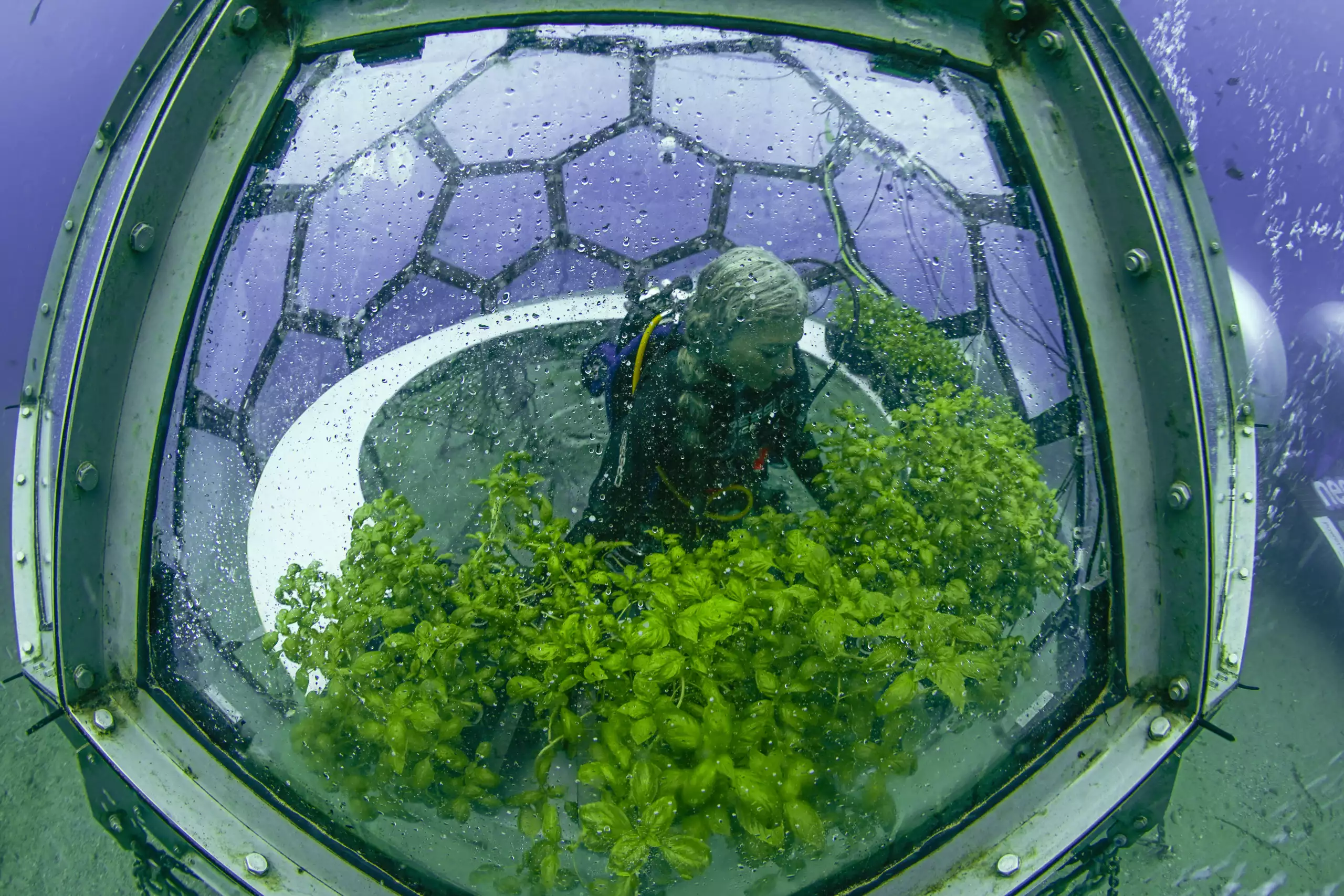
A New Frontier for Botanical Research and Innovation
The growing scientific relevance of Nemo’s Garden has attracted interest from the pharmaceutical and research sectors.
In recent years, leading companies have begun using our underwater biospheres as test environments—exploring the unique properties of plants cultivated in this unconventional setting.
Like us, they believe that underwater-grown botanicals may unlock new insights and applications for the future of medicine, nutrition, and beyond.
These include eco-tourism, seaweed and fish farming, marine wildlife monitoring, and the use of biospheres as underwater research labs. What began as an agricultural innovation is rapidly evolving into a multi-purpose platform for sustainable exploration.

